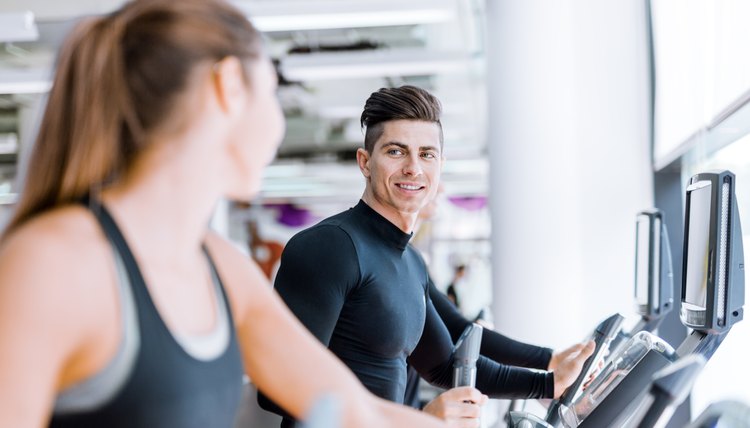Machines in the Gym That Increase Running Speed

The most reliable way for you to increase your running speed -- be it all-out sprint speed or speed sustained over a middle- or long-distance race -- is to practice running, be it endurance work or pure speed work, as often as your body allows. But bad weather, injuries and other limitations may confine you periodically to indoor equipment. Thankfully, you can use these machines to improve your speed.
The Treadmill
Purists may claim that treadmill running isn't "real" running. Tell that to Alaska's Christine Clark, who, confined almost exclusively to her treadmill while training for the 2000 Olympic Marathon Trials thanks to the bitter conditions in her home state, wound up winning that race. Indeed, the treadmill offers refuge from inclement weather, provides a soft surface and lets you program and monitor your pace with great precision. Even if you're especially fit, you can work your quads and glutes -- both critical sprinting muscle groups both -- on a treadmill without actually running if you set the grade high enough; most modern machines go up to 10 percent or higher, sufficiently steep to make a fast walk challenging.
The Elliptical Trainer
The elliptical machine became a helpful training adjunct for runners starting in the beginning of this century. It allows you to mimic the running motion to a fair degree, and in many ways it may actually be superior to the treadmill. The elliptical involves virtually no impact stresses, lets you work both your upper and lower body and lets you work your calves and hamstrings more than running does because you can pedal in reverse; all of these lead to the same adaptations that distance running confers, leading to faster paces in races of 5K or longer. Competitive athletes are better off focusing chiefly on actual running most of the time, but if you're prone to excessive soreness or injuries, consider substituting the elliptical for easy runs once or twice a week.
The Stair-Climber
Another way to get in a tough quasi-running workout without the pounding of running is climbing artificial steps in the form of a stair-climbing machine. Vigorous stair-climbing may burn as many calories per unit time as running does and has many of the same benefits as high-intensity running. These include building and toning the same muscles you use in running -- mainly the glutes, calves and quads -- and therefore increasing your speed, especially in longer running events. Many experienced runners even compete in organized stair-climbing races in skyscrapers, including running 86 flights of stairs in the Empire State Building in New York City.
The Cross-Country Skiing Simulator
Nordic ski machines are a super way to boost your running prowess in an impact-free way. If you're experienced with the real thing outdoors in snow, you'll take to the simulator all the more readily, but even if you've never donned skis you can get the technique down with ease. According to Gordon Bakoulis, former "Running Times" editor and the author of "Getting Real About Running," Nordic skiing resembles running in terms of the demands on your lower body while throwing in a dose of upper-body work as well; if you're looking for greater speed in your distance runs, better cardiovascular strength alone will help, whereas a stronger upper body contributes to faster all-out sprint speed.
References
Writer Bio
Michael Crystal earned a Bachelor of Science in biology at Case Western Reserve University, where he was a varsity distance runner, and is a USA Track and Field-certified coach. Formerly the editor of his running club's newsletter, he has been published in "Trail Runner Magazine" and "Men's Health." He is pursuing a medical degree.
